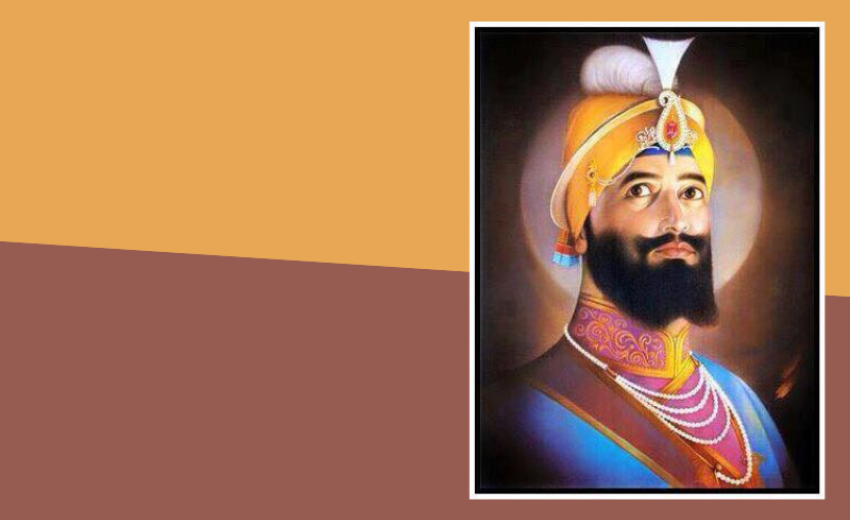Guru Gobind Singh Ji used to wear a beautiful crest on his turban. For this very reason, Guru Sahib is often remembered by the appellations of 'Kalgidhar' or 'Kalgi Wala' (one bearing a crest). About the meaning or definition of 'Kalgi', it is written in 'Gurshabad Ratnakar Mahan Kosh': 'A plumed ornament studded with precious jewels which Indian Kings and Rajas wear on their head. Similarly, about 'Kalgidhar' is written: "Sri Guru Gobind Singh who used to wear a remarkable 'Kalgi' (Crest) on his head." Similarly in the Punjabi Dictionary (Vol.1) published by the Language Department, Punjab, about 'Kalgi' it is written: 'An ornament of pearls and plumes which Kings wear on their turban. 'Kaligidhar': Guru Gobind Singh Ji who wears a crest on his head; and Kalgiwala: Guru Gobind Singh Ji Kalgidhar.
In Sikh history, it has been mentioned again and again that Guru Gobind Singh Ji used to wear a crest on his turban. When, in 1705, on the insistence of the Sikhs, Guru Sahib agreed to leave Anandpur Sahib, the forty Singhs who had pledged to remain with Guru Sahib and embrace martyrdom, only seven of them were left in the 'garhi' (small fort). Guru Sahib gave his word to leave Anandpur Sahib on the night of 5-6 December 1705. This was the most terrible battle in Sikh history. On the night of 5-6 December, Bhai Nabi Khan and Ghani Khan, sons of Bhai Nihang Khan's aunt Mrs Umri brought the Mughal army's blue apparel for the Guru. They requested Guru Sahib to put on disguise, but Guru Sahib declined to do so. At this, the Singhs present there passed a 'Gurmata' (resolution) ordering Guru Sahib to put on disguise.
This fact is corroborated by other historical documents also that Guru Sahib's crest was there in the 'tosha Khana'. When Dr. Logan took charge of the Lahore Tosha Khana (Treasure house), it contained the Kohinoor diamond, silver pitchers, Guru Gobind Singh's crest, Guru Sahib's weapons, Kashmiri shawls, cloaks, Maharaja Ranjit Singh's gold chair, Kabul's Minister Fateh Khan's sword, Iranian warrior Rustam's sword, Maratha ruler Holkar's sword, weapons of the brave generals, Mahan Singh's bridal dress and other rare objects, the details of which are spread over several pages.
In 1849, when along with minor Maharaja Dalip Singh, this rare treasure arrived in England, Guru Gobind Singh's crest certainly formed part of it. When four holy weapons of Guru Gobind Singh were brought back to Punjab after 117 years, they included - a shamsheer (scimitar or sword), one Sri Sahib (sword), one barchha (spear) and one 'dae - ahini'. These weapons had been acquired from Lady Adel Brown Lindsay belonging to the family of Lord Dalhousie. But Guru Gobind Singh's crest has not been acquired so far. The English still regard it as a rich heritage. In the Swiss bank too, there is a considerable treasure in the name of Maharaja Dalip Singh's daughter Princess Catherine. She died in 1942. In this bank, besides 1,31,883 francs, many royal objects of the Lahore Royal Court are also lying. It was talked about much in the papers in July 1997. Many secret documents are said to be lying in this treasure, which relate to Maharaja Dalip Singh.
It is the primary duty of the British Govt. to return all the objects of the Sikh treasure, including Guru Gobind Singh's crest, to the Sikhs.
